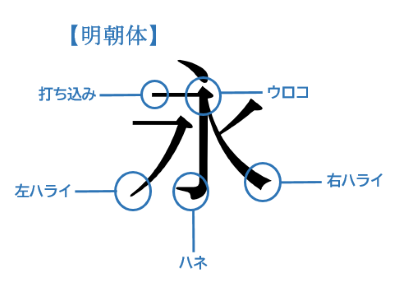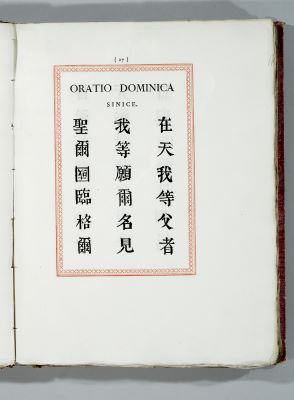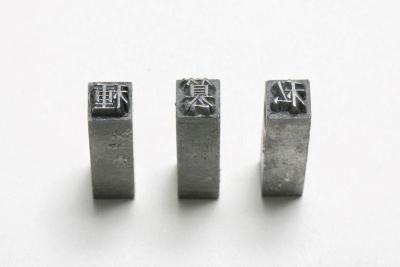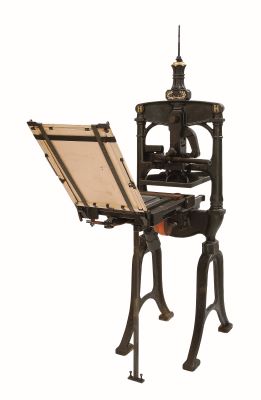- Yokohama-shi Top Page
- Municipal Government Information
- Public Relations, Public Information, News
- Public Relations and Publications
- Public Relations Printed Materials
- Public information Yokohama
- Public information Yokohama-shi version
- Discover Yokohama Aya
- January 2023 issue of the introduction of metal print and the beginning of information dissemination
Here's the text.
January 2023 issue of the introduction of metal print and the beginning of information dissemination
Yokohama with sea, port, greenery, history, region, people and various attractions. We will deliver the color of this city as "Yokohama Aya Discovery". This season has many opportunities to touch letters, such as New Year's cards and the beginning of the book. The first is the story of Yokohama and letters.
Last Updated January 1, 2023
Please see the link for the contents of the "Public Information Yokohama" January 2023 issue "Yokohama Aya Discovery".
Yokohama City Museum of History Exhibition "Small Giants Supporting Modern Japan"
Yasuko Ishizaki, curator of the Yokohama City Museum of History
What do you think of when you hear "print"?
"Type" is sometimes used in the meaning of printed materials such as books and newspapers and letters, but the original meaning is that characters are repeatedly expressed in the same shape, such as metal prints, photographic fonts, and digital fonts. Means something.
And it has been a long time since it has been said to be out of print, but people who do not read newspapers and books may have many opportunities to read letters and obtain information on PCs and smartphones. The characters used in this computer or smartphone are digital fonts. There are various typefaces in "printing", one of which is the Ming Dynasty.

The birth of the Ming Dynasty and the introduction to Yokohama
In the Ming Dynasty, vertical and horizontal paintings are vertical and horizontal, vertical paintings are thick, horizontal paintings are thin, driven at the beginning of horizontal paintings, scales at the end, splashes of vertical paintings, and rains on the left and right. It is a typeface with features. It was born in China in the morning. Initially, it was a typeface made for printing based on square writing, which was common as handwritten characters at the time for standardizing (woodblock print) printing. As printing technology developed from printing to printing, printing began to be made of metal for printing, and metallic printing of Ming Dynasty, which wrote Chinese, began to be made.
It was China that invented the typeface called the Ming Dynasty, but it was in Europe in the early 19th century that Oriental studies flourished. The type production technology was introduced to China along with the Christian mission of Asia, and was introduced from China to Nagasaki at the beginning of the Meiji era. Then, the following year, it was passed on to Yokohama, and Yokohama began its journey as a major information dissemination base in Japan.

Figure 1: "Prayer of the Lord of 150 Languages" printed in France, French Imperial Printing Office 1805 Hiroshi Komiyama Bunko, Collection of Yokohama City Museum of History
Special exhibition "Small Giants Supporting Modern Type Japan"
Hirofumi Komiyayama, a typeface designer and type history researcher, elucidated the world-wide long history of this type with materials he collected. Recently, Mr. Komiyayama donated the collected valuable materials to the Yokohama City Museum of History, and the catalog of "Hiroshi Komiyama Bunko" was published on the website (outside site). And this time, the Yokohama City Museum of History is holding a special exhibition "Small Giants Who Supported Modern Type Japan" (outside site) utilizing donated materials. The exhibition is an exhibition of the history of print, following the birth of kanji characters revealed by Mr. Komiyayama and the traditional journey to Japan.
Project contents-"Prayer of the Lord in 150 Languages", "Ming Dynasty Metal Type", "Domestic Print Machine", etc.-
The exhibition introduces about 150 materials, one of which is a book published in France in 1805, called "The Lord of the 150 Languages." This book is the order of Napoleon I, which was taken up by the French Imperial Printing Office in 150 languages, and most of the characters unique to each language, not woodblocks or copper plates, were printed using print. If you look at the part where the kanji type of "The Lord of Prayer of 150 Languages" is printed (Fig. 1), you can see that the typeface is Ming Dynasty. And the word "country" is falling. This book is the oldest book printed in the Ming Dynasty type among the materials introduced in the exhibition.
In addition, there will be exhibitions such as the metal print of the Ming Dynasty produced by missionaries for the missionary missionary of Christianity in China (Fig. 2), and a domestic printing machine (Fig. 3), which was produced by the Hirano Printing Works, which started printing and printing in Tokyo, taking advantage of the technology introduced to Nagasaki.
 Figure 2: The collection of metallic character Hiromitsu Suzuki by Missionary Samuel Diaer and Richard Call of the London Missionary Society
Figure 2: The collection of metallic character Hiromitsu Suzuki by Missionary Samuel Diaer and Richard Call of the London Missionary Society
 Figure 3: The Mizuno Printing Museum, a hand-press printing machine manufactured by Hirano Printing Works
Figure 3: The Mizuno Printing Museum, a hand-press printing machine manufactured by Hirano Printing Works
150 years since the introduction of print to Japan
About 150 years have passed since the print was introduced to Japan. In the meantime, the type used in Japanese has been improved by many craftsmen and typeface designers (in recent years, both typeface designers). It also conveys a lot of information about Japanese culture, society and technology, and has always been used in daily life. The computer contains a large number of typefaces, and we can use it freely. The choice of typefaces is left to the user, but knowing the history and culture of the typefaces can lead to more independent characters and printing. We hope that this exhibition will serve as an opportunity to deepen our perspective on the appeal of type and typefaces. By all means, please enjoy the world of print.
Yokohama City Museum of History Exhibition "Small Giants Supporting Modern Japan"
Period From Saturday, December 10, 2022 (Reiwa 4) to Sunday, February 26, 2023 (Reiwa 5) ※
※ Closed Monday except January 9, from Wednesday, December 28 to Wednesday, January 4, and Tuesday, January 10
Location 1-18-1 Nakagawa Chuo, Tsuzuki-ku, Yokohama (5-minute walk from the Municipal Subway Centerkita Station)
Please check the viewing fee and other links (outside site).
Inquiries to this page
Yokohama City Museum of History
Telephone: 045-912-7777
Telephone: 045-912-7777
Fax: 045-912-7781
Page ID: 692-482-732







